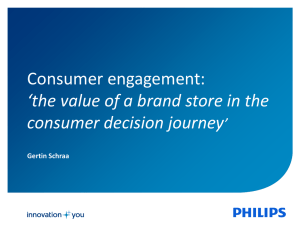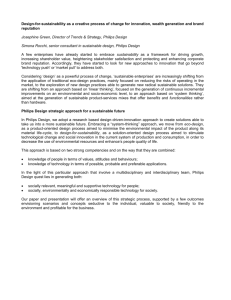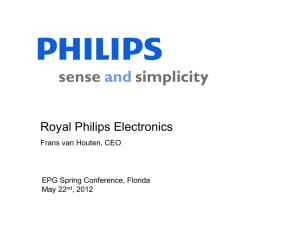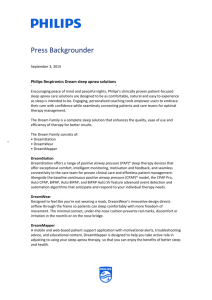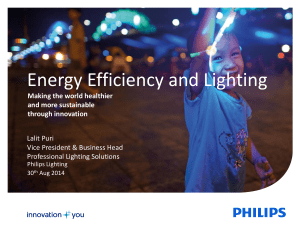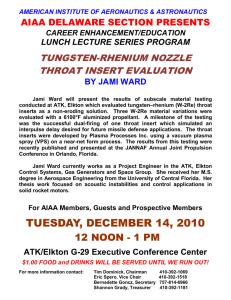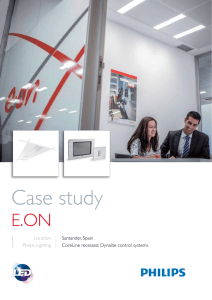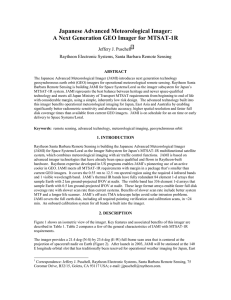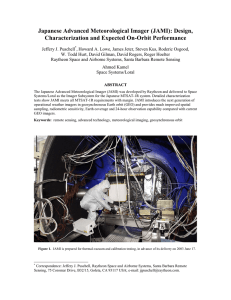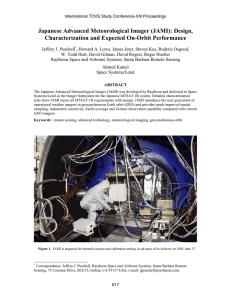Case study - Philips Lighting
advertisement
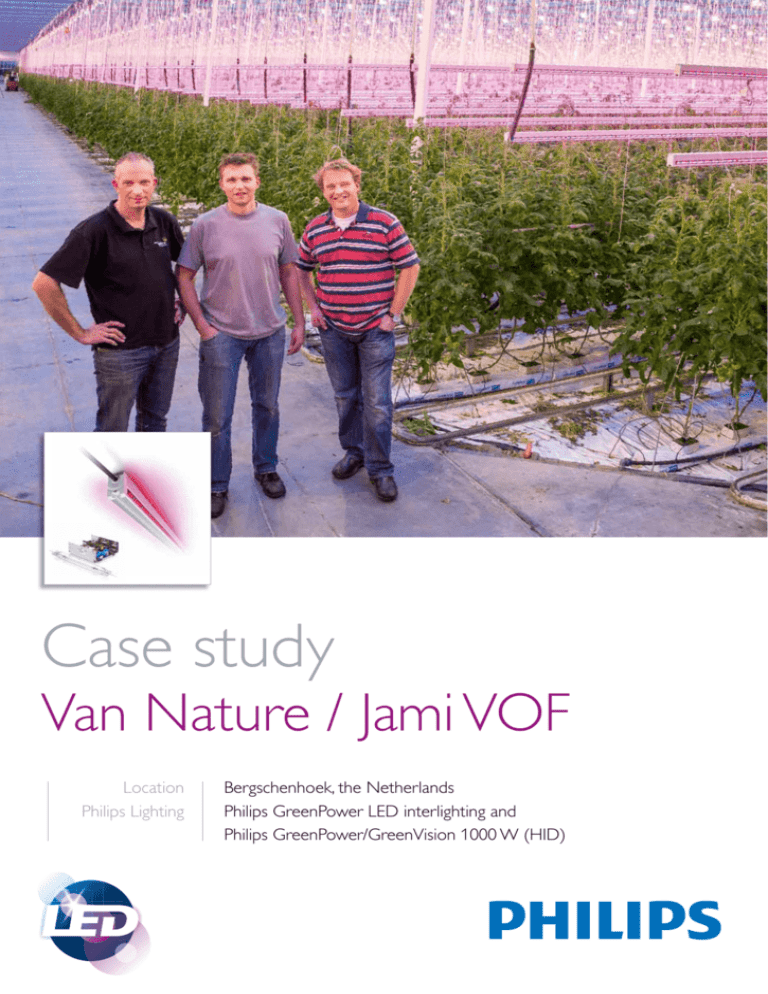
Case study Van Nature / Jami VOF Location Philips Lighting Bergschenhoek, the Netherlands Philips GreenPower LED interlighting and Philips GreenPower/GreenVision 1000 W (HID) “The Philips LED modules fit in perfectly with our objectives of improving yield and making business operations more sustainable” Background Customer demand for high-quality tomatoes in winter from growers association Van Nature formed the basis for the eventual decision to invest in lighting at Jami. The reason for this is that Van Nature aims to supply high-quality products all year round that meet today’s requirements relating to food safety. And Jami’s tomatoes are an excellent example of this, according to Mark Versluis of Van Nature. Jami VOF is managed by three entrepreneurs. Michel Zwinkels and the brothers Arjan and Andy de Jong are constantly on the lookout for innovative and original solutions for improving and increasing production and making it more sustainable. reproducible results convinced the company about the potential offered by LED interlighting. Tests with the hybrid system have demonstrated that it can increase production by means of more efficient light absorption. In this system, the part of light given by the LED interlighting modules can contribute 1.46 times more to production than if this light was given extra on top of the plant by HID. Particularly in the winter months this provides the plant with better growing conditions. But also in the summer there are opportunities of keeping your crop in control and keep transforming the light energy efficiently in production. The challenge The solution Jami VOF was looking for ways to expand production, both by extending its cultivated area inside or outside the Dutch borders or by increasing production on the existing 60,000 m2 of cultivated area. The entrepreneurs were not yet using additional lighting here. So there was scope for achieving benefits. Jami kept a close eye on the trials taking place at the Improvement Centre with tomatoes. The excellent and In order to increase production, lengthen the season and also to keep the temperature in the greenhouses at the required level during the longer season,Van Nature and Jami, in consultation with Philips, opted for a hybrid solution: a double line of GreenPower LED interlighting modules (110 micromoles per m2) in combination with conventional HID lighting (105 micromoles per m2). Jami has now fitted The hybrid system increases production and also makes for a more consistent production process Facts Grower Growers association Van Nature / Jami VOF Sector Vegetables Crop Tomatoes (Komeett) Location Bergschenhoek, Zuid-Holland, the Netherlands Solution Philips GreenPower LED flowering lamp Philips GreenPower/GreenVision 1000 W (HID) Philips LED Horti Partner Lights Interaction Agro b.v. Results Increase in production, especially rise in winter production lighting on 3 ha, half of its cultivated area. This installation provides the lighting between the crops so as to ensure optimal growth for the plants and also makes for a suitable plant temperature during the colder winter months. Besides performing various calculations and extensive risk analyses, Philips has provided considerable assistance with the applications for grants and the eventual financing. As a result, it was possible to start the process of increasing production with a minimum of risk and a maximum of risk management. Benefits ‘I’ve acquired an extra control option as regards of vegetative and generative growth of the plant, since I can switch the top lighting and interlighting separately. So in spring, when the days are darker, I can switch on the interlighting and I’m keeping my plants in balance. You can also clearly notice the water demand when the interlighting is switched on. Higher water demand equals more transfer of assimilates and nutrients, resulting in a higher creation speed of tomatoes.’ When examining the operating profit Jami looks at more than just yield. Michel Zwinkels of Jami: ‘We’re constantly improving the yield and making business operations more sustainable. The Philips LED modules fit in perfectly with those objectives. The hybrid system increases production and also makes for a more consistent production. And it means that production is at the lowest possible cost per unit of product’. ‘The gas consumption in our greenhouse has already decreased since we implemented lighting, for example. Particularly in the winter months a great deal of benefit can be achieved. In comparison with HID, the LEDs provide an instant 10% energy savings, the heating costs are also being reduced and on top of it all, the plants are effectively converting interlighting in tomatoes. Another reason why Van Nature and ourselves are very enthusiastic is the system’s energy efficiency. Not only for the plant, but also for the environment and the operating profit. It fits into the sustainability objective. So the Philips hybrid system is the ideal solution for us’, says Michel Zwinkels. © 2013 Koninklijke Philips Electronics N.V. Alle rechten voorbehouden. Niets uit deze uitgave mag worden verveelvoudigd en/of openbaar gemaakt zonder voorafgaande schriftelijke toestemming van de eigenaar. De inhoud van deze uitgave is niet gebaseerd op citaten of overeenkomsten, wordt als juist en betrouwbaar ­beschouwd en kan zonder aankondiging worden gewijzigd. De uitgever kan niet aansprakelijk worden gehouden voor de gevolgen van het gebruik. Publicatie houdt niet in dat licentie op octrooi of op enig ander industrieel of intellectueel eigendom wordt verleend. 03/2013 Document order nummer: 3222 635 67226 www.philips.com/horti
